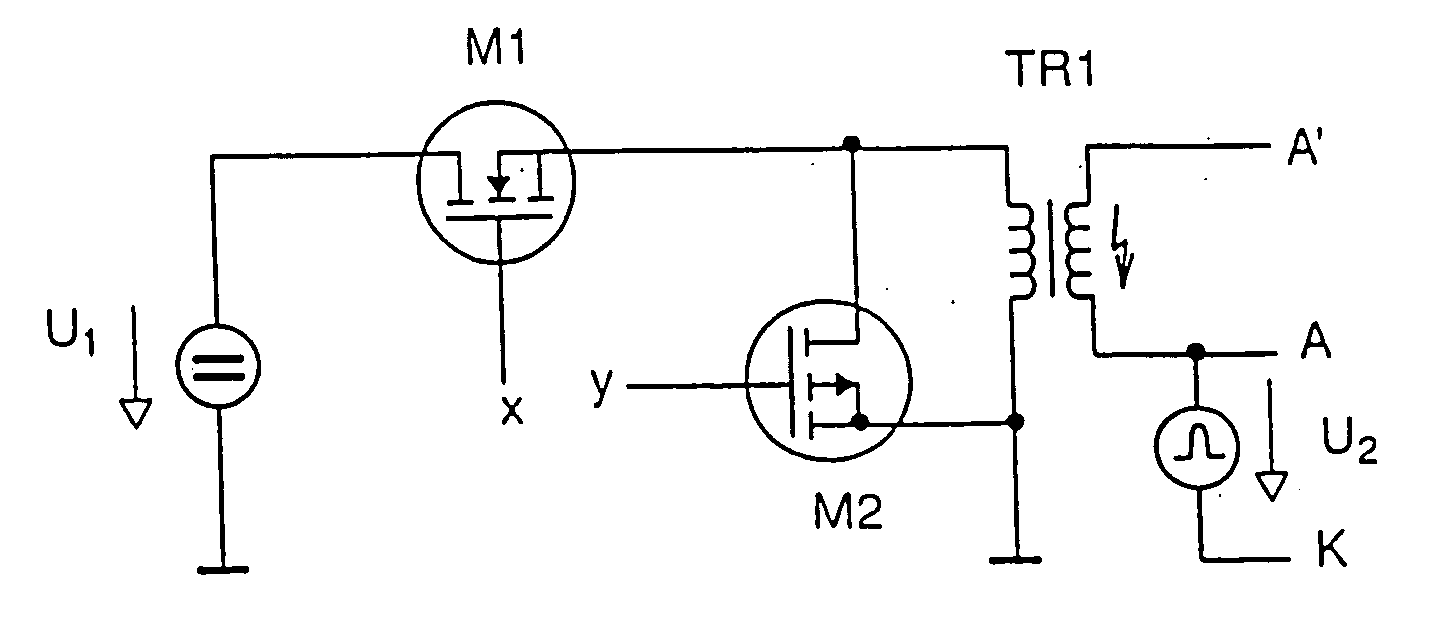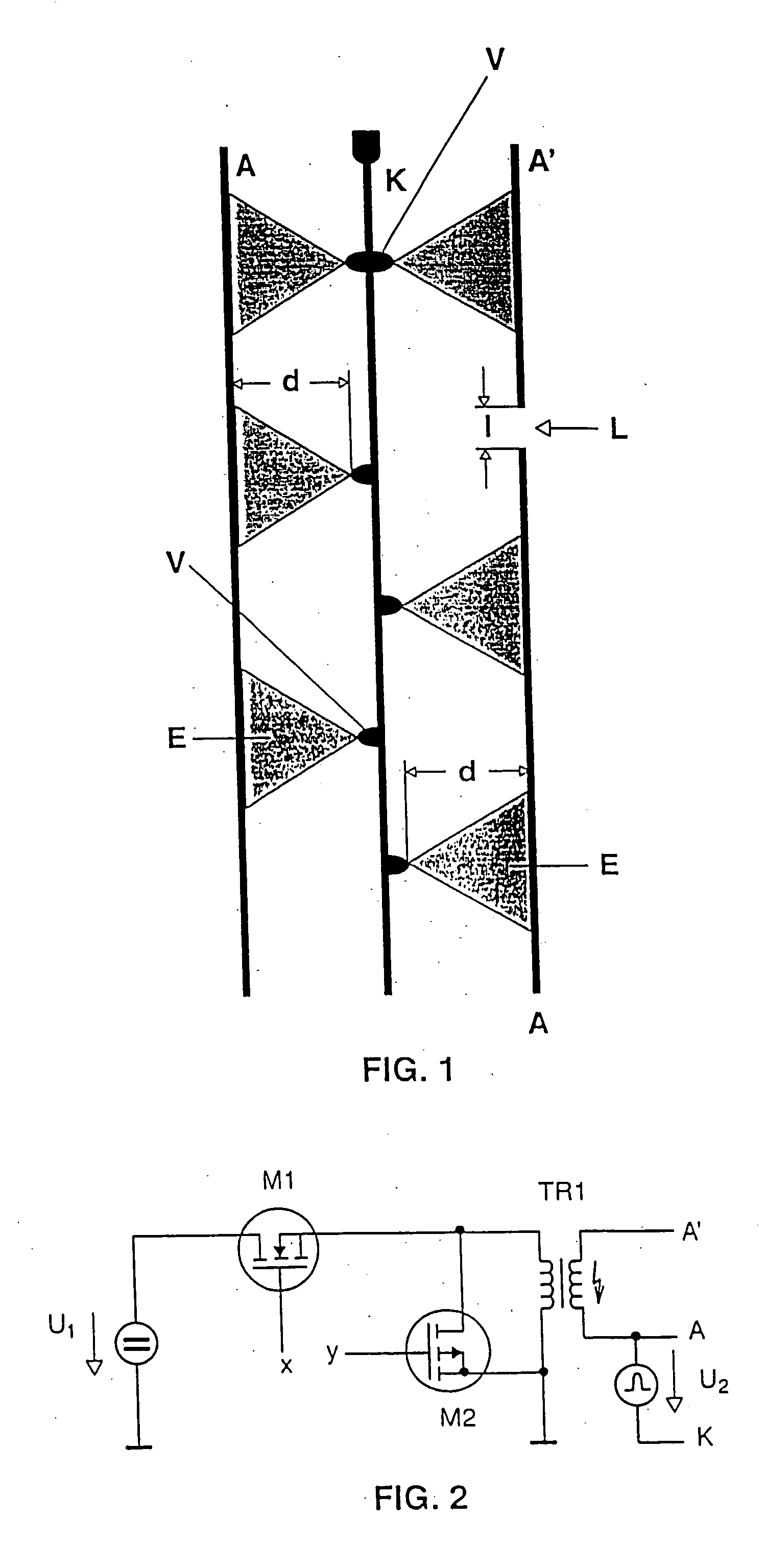Dielectric barrier discharge lamp and method and circuit for igniting and operating said lamp
a technology of dielectric barrier and discharge lamp, which is applied in the direction of electric discharge lamps, energy-saving lighting, sustainable buildings, etc., can solve the problems of long ignition delay after the application of voltage to the electrodes of the lamp, sacrificing the maximum possible luminous efficiency, and affecting the operation of the lamp in the dark
- Summary
- Abstract
- Description
- Claims
- Application Information
AI Technical Summary
Benefits of technology
Problems solved by technology
Method used
Image
Examples
Embodiment Construction
[0031] FIG. 1 shows a detail of an electrode design for a flat dielectric barrier discharge lamp. The electrode design is intended for operation with unipolar voltage pulses, and has for this purpose a number of anode tracks A and cathode tracks K that are printed on the base plate of the flat lamp (not illustrated here). There is always one cathode track arranged between two anode tracks in this case. For the sake of clarity, only one detail is illustrated with two anode tracks and one cathode track. The electrode tracks are covered with a thin glass layer (not illustrated) acting as dielectric barrier. Each cathode track K has projections V on both sides, which serve as means for locating the triangular partial discharges E burning during operation. The right-hand anode track in FIG. 1 is divided into the two component anode tracks A and A' by the gap L, which interrupts this anode track. The length 1 of the electrode gap L is approximately 0.8 mm. Located to the left of the catho...
PUM
 Login to View More
Login to View More Abstract
Description
Claims
Application Information
 Login to View More
Login to View More - R&D
- Intellectual Property
- Life Sciences
- Materials
- Tech Scout
- Unparalleled Data Quality
- Higher Quality Content
- 60% Fewer Hallucinations
Browse by: Latest US Patents, China's latest patents, Technical Efficacy Thesaurus, Application Domain, Technology Topic, Popular Technical Reports.
© 2025 PatSnap. All rights reserved.Legal|Privacy policy|Modern Slavery Act Transparency Statement|Sitemap|About US| Contact US: help@patsnap.com


